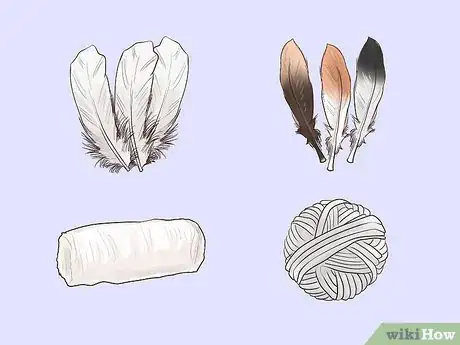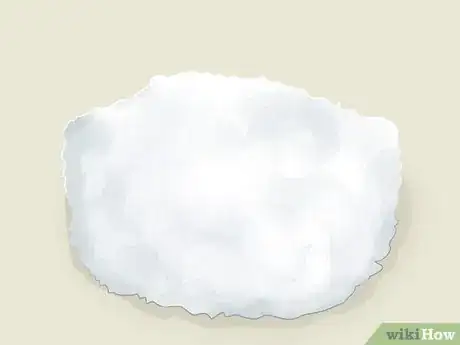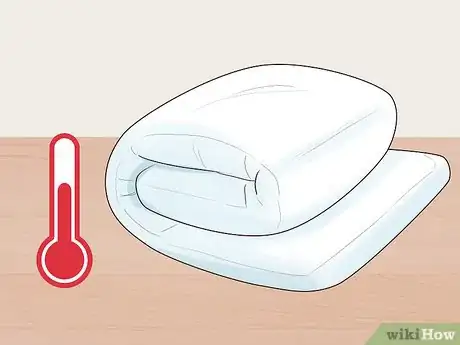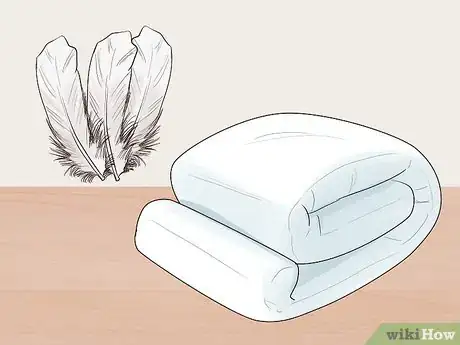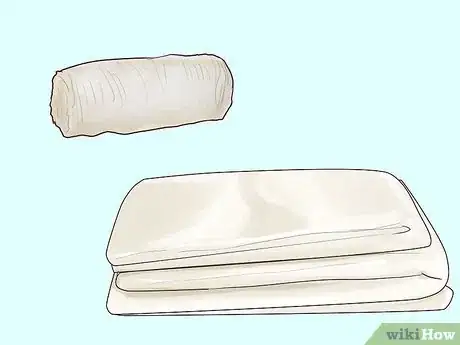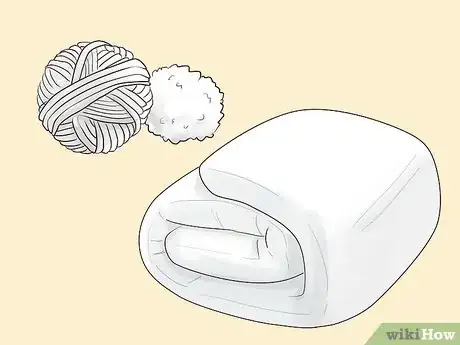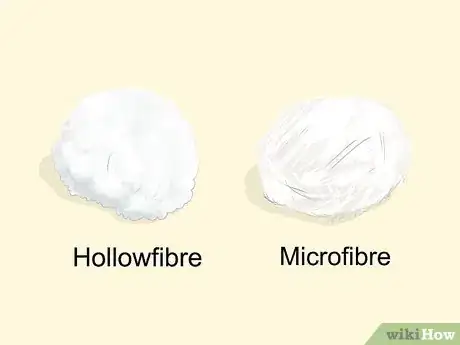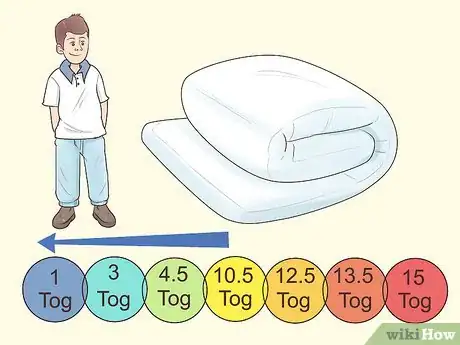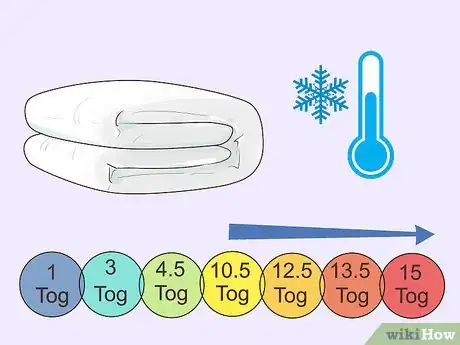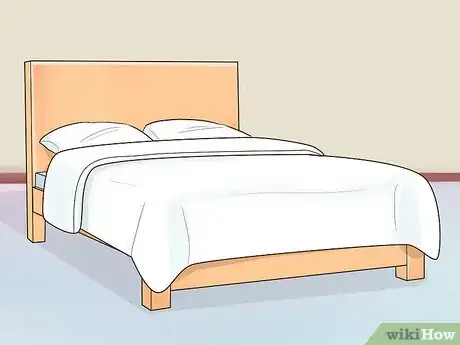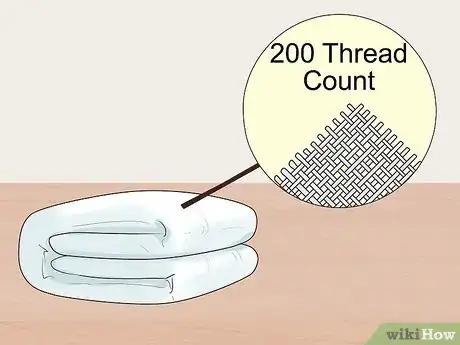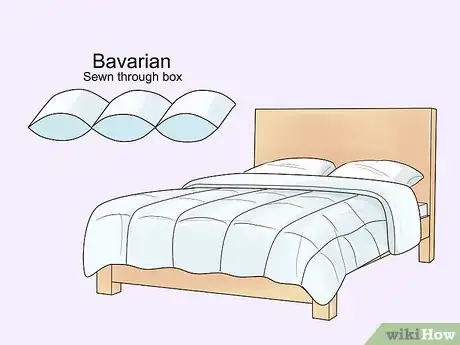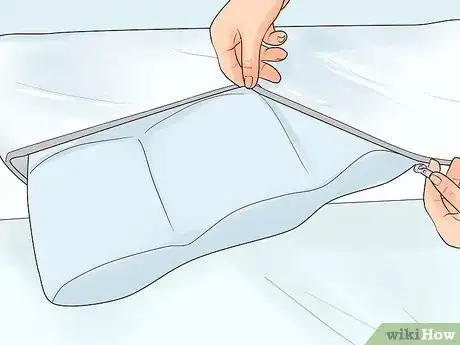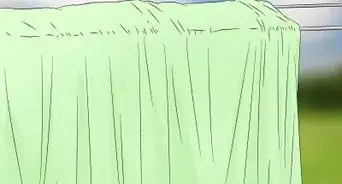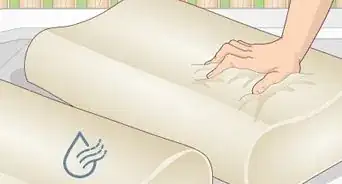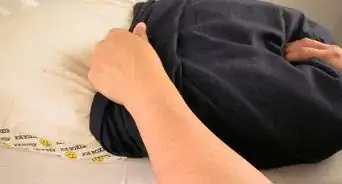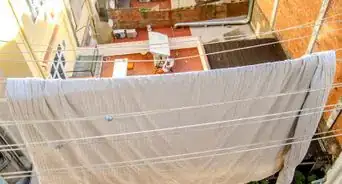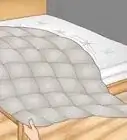This article was co-authored by Garrison Hullinger. Garrison Hullinger is an Interior Designer and the President of Garrison Hullinger Interior Design (GHID). With more than 15 years of experience, he specializes in client-centered design that balances beauty and warmth with comfort and functionality. Garrison and GHID’s work has been featured in numerous publications such as The New York Times, The Wall Street Journal, and Interior Design Magazine. Garrison attended Oklahoma Christian University.
This article has been viewed 56,661 times.
Buying a quality duvet is a great investment — since you spend so much time sleeping, you should have bedding that keeps you comfortable each night. There's a lot to consider, such as whether you want a natural or synthetic filling, as well as which tog rating, or insulation rating, is best for you. By learning about your different options, you'll be able to choose a duvet perfect for your needs.
Steps
Picking a Filling
-
1Choose a natural filling for great insulation. Natural fillings, such as ones made of duck or goose feathers, provide great insulation and warmth. They also let moisture escape, creating a soft, breathable duvet.[1]
- Types of natural fillings include goose and duck feathers, silk, and wool.
- Hypoallergenic down duvets are available if you have allergies but still want the down quality.
- Down- and feather-filled duvets tend to be the most expensive option.
-
2Opt for a synthetic filling for an affordable, lightweight option. If you're allergic to feathers, synthetic fillings are a great choice. They're cheaper than natural fillings and are super lightweight. They're usually made of either hollowfibre or microfibre.[2]
- Synthetic duvets can be washed much more often than natural fillings.
Advertisement -
3Look for the duvet's fill power when buying a feather filling. Finding out what the duvet’s fill power is will tell you about its insulation. The higher the fill power, the fluffier and warmer the feathers. Fill powers may range from 450 to 900, with 700 being very plump.[3]
-
4Select a down-filled duvet for the best level of warmth. Down-filled duvets are made of the tiniest and fluffiest feathers and provide great insulation. If you live in a cold climate or want to stay super warm at night, a duvet filled with down is your best option.[4]
-
5Decide on a feather-filled duvet for a more cost-efficient option. Feather-filled duvets contain larger feathers than down and are heavier. They're less expensive than down-filled duvets and still provide great warmth.[5]
- You can also buy a duvet that has a combination of both down and feather filling.
-
6Pick a duvet filled with silk if you have allergies but want a natural filling. Silk is a great option for a filling because it’s hypoallergenic, lightweight, and durable. The silk prevents you from becoming too hot or cold while asleep, and it even protects your duvet from dust mites.[6]
-
7Buy a wool-filled duvet to help with temperature regulation. As a natural filling, wool is very breathable. It’s an ideal choice if you want a duvet that insulates you while also evaporating moisture. Plus, wool is even fire resistant, making your night’s sleep even safer.[7]
-
8Decide on a hollowfibre or microfibre filling for a non-allergenic duvet. The two options for synthetic fillings are microfibre or hollowfibre. Hollowfibre has hollow strands that are more wire-like than microfibre, but they’re also more durable and trap warmth well. Microfibre is the synthetic version of down, and it’s much lighter than feather-filled duvets.[8]
Deciding on a Tog Rating
-
1Pick a duvet with a low tog rating for children. Kids naturally have more body heat, meaning they don’t need a duvet with a super high tog rating. Before the age of 10, a child shouldn’t have a duvet with a tog rating of more than 10.5. Children less than 1 year old shouldn’t use a duvet at all.[9]
- For a toddler, an appropriate tog rating would be between 3 and 4.5. As they get a little older, it can increase to 7.5-9.
-
2Choose a tog rating of 1-7 for a summer duvet. For the warmer summer months, you’ll want a lighter duvet that isn’t going to make you sweat while you’re sleeping. Choose a duvet with a tog rating between 1 and 7 for the spring and summer, with 4.5 being an ideal choice.[10]
- Choosing a tog rating will also depend on personal preferences. If you tend to get hot while sleeping, regardless of what the temperature is outside, you’ll want to decide on a lower tog rating.
-
3Select a 10.5-tog duvet or above for the cold winter months. When the weather turns chillier, you’re going to want your duvet to retain more heat. Choosing a tog rating of 10.5 or above for the winter months should keep you warm at night. 13.5 is an ideal average tog rating, but take into consideration how cold the climate is where you live.[11]
-
4Opt for an all-season duvet that combines a low tog and a high tog. All-season duvets are two duvets in one, and you can separate or join them together depending on the season. One duvet will have a lower tog rating, like a 4.5, and the other duvet will have a higher one, such as a 9. In the spring and summer months, you can use the lighter duvet, and then when it gets cold you can fasten them together.[12]
- All-season duvets are usually joined together with buttons, making them easy to take apart.
- Using an all-season duvet will give you the flexibility of being able to change the tog rating, and you’ll also have an extra duvet for most of the year.
Selecting Size and Structure
-
1Choose a duvet that will fit your bed size. Duvets come in twin, full, queen, and king sizes, so pick a size that corresponds to your mattress size. If you want the duvet to hang over the sides a little more, or you’re really tall, you might consider getting the next size up.[13]
-
2Pay attention to the ticking and thread count. The ticking, or the outer part of the duvet, is what holds the filling and is usually made of 100% cotton. It’s important to look at the thread count of the ticking, especially if buying a down or feather duvet. The higher the thread count, the tighter the fabric is woven, meaning it will be much harder for feathers to escape.[14]
- Buying a duvet made of cotton ticking, or cotton-polyester, ensures your duvet is super breathable.
- Aim for a thread count of 200 or more.
-
3Decide on sewn through box construction for an affordable duvet. To keep the filling spread out, sewn through box construction has both sides of the duvet sewn together to create boxes. While this keeps the filling in place, it also doesn't allow filling to reach the edges of each box, making it less warm.[15]
-
4Choose baffle box construction for a more insulated duvet. In a baffle box structure, small walls are built between each square so that the filling remains spread out while still retaining its warmth. In this construction, there aren't any cold spots.[16]
- Baffle box construction is more expensive than sewn through box construction due to its more intricate structure.
-
5Protect your duvet by buying a duvet cover. Since duvets aren't easily cleaned, choosing a cover for your duvet will help protect it and make the cleaning process much easier. Duvet covers come in many different materials and styles, allowing you to choose one that matches your bedroom or personal preferences.
- Duvet covers are less expensive than regular duvets, making them an affordable option.
- The covers attach to the duvet with zippers, buttons, or ties.
Expert Q&A
-
QuestionWhat is the best filling for a duvet insert?
 Garrison HullingerGarrison Hullinger is an Interior Designer and the President of Garrison Hullinger Interior Design (GHID). With more than 15 years of experience, he specializes in client-centered design that balances beauty and warmth with comfort and functionality. Garrison and GHID’s work has been featured in numerous publications such as The New York Times, The Wall Street Journal, and Interior Design Magazine. Garrison attended Oklahoma Christian University.
Garrison HullingerGarrison Hullinger is an Interior Designer and the President of Garrison Hullinger Interior Design (GHID). With more than 15 years of experience, he specializes in client-centered design that balances beauty and warmth with comfort and functionality. Garrison and GHID’s work has been featured in numerous publications such as The New York Times, The Wall Street Journal, and Interior Design Magazine. Garrison attended Oklahoma Christian University.
Interior Designer Choose something that has some type of quilting or tucking so your material doesn't all ball up in one area. You also want to choose a material that matches the quality of your sheets so you don't create any friction with your duvet.
Choose something that has some type of quilting or tucking so your material doesn't all ball up in one area. You also want to choose a material that matches the quality of your sheets so you don't create any friction with your duvet.
Warnings
- Children under 1 year of age shouldn't use a duvet — it can cause them to suffocate or overheat.⧼thumbs_response⧽
References
- ↑ http://www.independent.co.uk/extras/indybest/house-garden/bedroom/duvet-buying-guide-how-to-choose-tog-natural-synthetic-filling-best-type-winter-summer-reviews-a7946836.html
- ↑ http://www.independent.co.uk/extras/indybest/house-garden/bedroom/duvet-buying-guide-how-to-choose-tog-natural-synthetic-filling-best-type-winter-summer-reviews-a7946836.html
- ↑ https://www.homestratosphere.com/summer-duvet-buying-guide/
- ↑ http://www.independent.co.uk/extras/indybest/house-garden/bedroom/duvet-buying-guide-how-to-choose-tog-natural-synthetic-filling-best-type-winter-summer-reviews-a7946836.html
- ↑ http://www.independent.co.uk/extras/indybest/house-garden/bedroom/duvet-buying-guide-how-to-choose-tog-natural-synthetic-filling-best-type-winter-summer-reviews-a7946836.html
- ↑ https://www.houzz.co.uk/ideabooks/54055089/list/how-to-choose-the-perfect-bedding
- ↑ https://www.houzz.co.uk/ideabooks/54055089/list/how-to-choose-the-perfect-bedding
- ↑ http://www.independent.co.uk/extras/indybest/house-garden/bedroom/duvet-buying-guide-how-to-choose-tog-natural-synthetic-filling-best-type-winter-summer-reviews-a7946836.html
- ↑ http://www.independent.co.uk/extras/indybest/house-garden/bedroom/duvet-buying-guide-how-to-choose-tog-natural-synthetic-filling-best-type-winter-summer-reviews-a7946836.html
- ↑ https://www.homestratosphere.com/summer-duvet-buying-guide/
- ↑ https://www.homestratosphere.com/summer-duvet-buying-guide/
- ↑ https://www.homestratosphere.com/summer-duvet-buying-guide/
- ↑ http://www.homefamily.net/2011/09/12/selecting-a-duvet/
- ↑ http://www.homefamily.net/2011/09/12/selecting-a-duvet/
- ↑ http://www.homefamily.net/2011/09/12/selecting-a-duvet/
- ↑ http://www.homefamily.net/2011/09/12/selecting-a-duvet/
